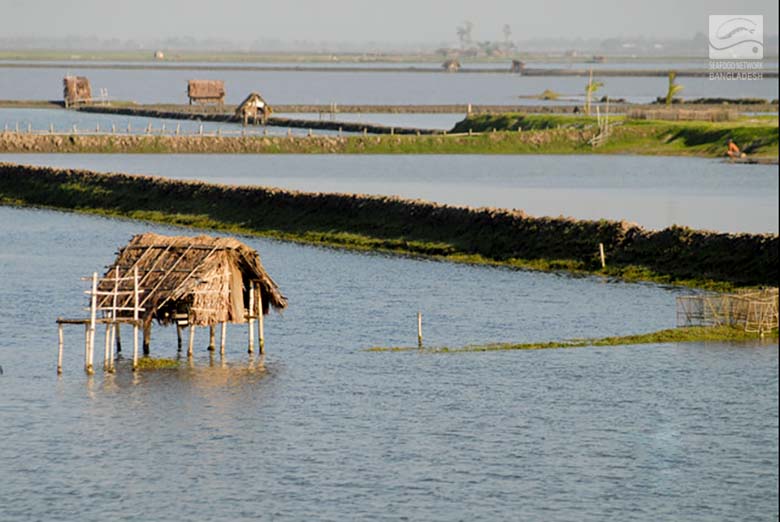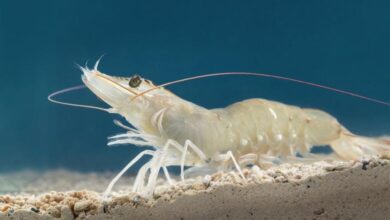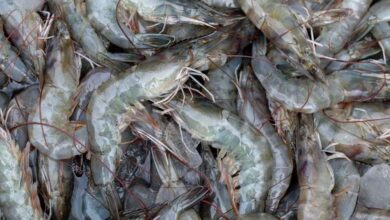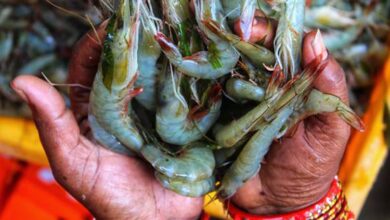
Scientists have recently explored the application of RNAi to combat viral infections and to treat viral shrimp diseases with RNAi-based therapy. It is now thought that this novel method can be used to manage and control shrimp disease more effectively than before.
Despite disease concerns being a significant problem for most aquaculture species, shrimp may be the most vulnerable and have had the most impact on their production. It is estimated that 40% of shrimp production worldwide is lost to disease every year.
Despite the presence of substantial disease issues, shrimp farming in countries like Bangladesh continues to thrive on a huge scale. This is mostly owing to the tremendous value of shrimp and the comparatively short growth cycle. Appropriate management practices in shrimp farms can often prevent parasitic and bacterial diseases from spreading, but not viral ones.
As viral diseases have become more common, antibiotics have become more widely used. There are, however limitations to the use of antibiotics and vaccines as far as efficacy, specificity, and environmental impact are concerned. Increasing antimicrobial use across the aquaculture sector poses significant risks and is of concern due to the growing incidence of antimicrobial resistance.
Hence, there is an urgent need for the development of novel medical approaches to successfully address these diseases while also mitigating their adverse consequences.
In this Case, RNAi-based therapy can be effective for combating viral shrimp diseases.
RNA interference (RNAi) technology has garnered significant interest as a viable therapeutic approach for the treatment of shrimp illnesses. This mechanism silences target genes in pathogens by efficiently degrading messenger RNAs (mRNAs), thereby regulating gene expression. Since it uses targeted ways to interfere with the multiplication and pathophysiology of infectious pathogens, it is an appealing choice for disease management in shrimp farming.
Proteins implicated in the RNA interference (RNAi) pathway have been identified in many species, including the black tiger shrimp (Penaeus monodon), Pacific white shrimp (Litopenaeus vannamei), and Kuruma shrimp (Marsupenaeus japonicus). The presence of RNA interference (RNAi) machinery in shrimp has been confirmed, therefore proving its existence.
Several studies have demonstrated the efficacy of dsRNA/siRNA, a non-coding double-stranded RNA molecule commonly referred to as silencing RNA or short interfering RNA, in suppressing the reproduction of several virus species either before to or concurrent with viral exposure. RNAi-inducers were also shown to have a therapeutic effect when delivered to shrimp that have already contracted an infection. Several studies show that simultaneously silencing viral structural and non-structural proteins and targeting both viral and host genes improves therapeutic response.
RNAi provides an alternative strategy by destroying the mRNA that codes for viral proteins, preventing the production of functional viral particles. Within the field of aquaculture, RNA interference (RNAi) is regarded as a highly promising strategy for effectively managing disease pathogens by means of gene modification.
Furthermore, the RNAi-based therapies, if implemented correctly, could be promising for Bangladesh. A considerable amount of studies suggests that shrimp production in the country is declining because of higher costs, drought, and diseases. For example, Khulna, Bangladesh’s central shrimp aquaculture region, exported 19,900 metric tons of shrimp in the 2022-2023 fiscal year. The amount was down from 24,100 MT the previous year and it was down from 39,706 MT the previous year.
Experts indicate that, the lack of clean water and inadequate waste removal result in an overload of metabolites and environmental degradation, leads to shrimp becoming stressed and more prone to diseases in Bangladesh.
Therefore, the Bangladeshi authority must justify the need of the introduction of RNAi-based therapies.
Even though RNAi therapy is an impressive biological mechanism for regulating gene expression precisely, several challenges and considerations must be addressed before it can be implemented in shrimp aquaculture. RNAi agents must be administered in vivo successfully due to risks of off-target effects, innate immunity, and, in particular, the activation of the innate immune system.
RNAi-mediated suppression is also vulnerable to evasion by certain viruses, which is a crucial practical concern. In addition to mutations in the targeted region, viral suppressors can play a role in this evasion.
Nevertheless, further work is needed to overcome existing challenges and implement this game-changing remedy.
Jaber Bin Abdul Bari
Department of Oceanography, NSTU




